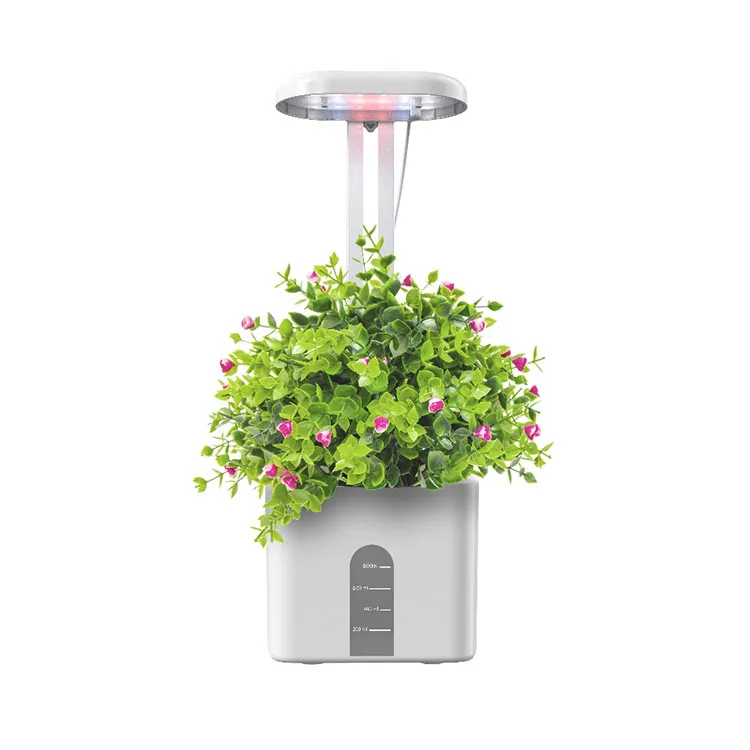How to Choose the Best LED Grow Light for Your Indoor Garden
2024-07-27
Introduction
Choosing the right LED grow light can significantly impact the success of your indoor garden. With a variety of options available, it can be challenging to determine which one is best suited for your needs. In this blog, we'll guide you through the essential factors to consider when selecting the best LED grow light for your indoor garden.
Key Factors to Consider
1. Light Spectrum
The light spectrum is crucial for plant growth. Look for LED grow lights that offer a full spectrum, including both blue and red wavelengths. Full-spectrum lights mimic natural sunlight and are suitable for all stages of plant growth, from seedlings to flowering.
2. PPFD (Photosynthetic Photon Flux Density)
PPFD measures the amount of light (in micromoles per square meter per second) that reaches the plant canopy. Higher PPFD values indicate more intense light, which is beneficial for plant growth. Ensure the light you choose provides adequate PPFD for the type of plants you are growing.
3. Wattage and Coverage Area
Consider the wattage of the LED grow light and the coverage area it can effectively illuminate. Higher wattage lights are suitable for larger gardens, while lower wattage lights are ideal for smaller setups. Check the manufacturer's specifications to ensure the light can cover your garden area adequately.
4. Energy Efficiency
LED grow lights are known for their energy efficiency, but some models are more efficient than others. Look for lights with high energy efficiency ratings to save on electricity costs and reduce heat output.
5. Heat Management
Effective heat management is crucial to prevent overheating and ensure the longevity of your LED grow light. Choose lights with built-in cooling systems, such as heat sinks or fans, to maintain optimal operating temperatures.
6. Adjustability
Some LED grow lights offer adjustable settings for light spectrum and intensity. These features allow you to tailor the light conditions to different stages of plant growth, ensuring your plants receive the optimal light they need at each stage.
7. Durability and Warranty
Invest in LED grow lights from reputable manufacturers that offer durable construction and reliable performance. Check for warranties and customer support to ensure you can get assistance if any issues arise.
Types of LED Grow Lights
1. Panel LED Grow Lights
Panel LED grow lights are popular for their broad coverage and high efficiency. They are suitable for medium to large indoor gardens and often come with adjustable spectrum settings. These lights are versatile and can be used for various plant types and growth stages.
2. Strip LED Grow Lights
Strip LED grow lights are flexible and can be arranged to fit different garden shapes and sizes. They are ideal for vertical gardens, shelves, or smaller spaces. Strip lights are usually less powerful than panel lights but provide excellent coverage for smaller areas.
3. COB (Chip on Board) LED Grow Lights
COB LED grow lights feature multiple LED chips mounted on a single board, producing intense and uniform light. They are highly efficient and provide excellent light penetration, making them suitable for larger plants and dense canopies.
4. Quantum Board LED Grow Lights
Quantum board LED grow lights are a type of panel light with a flat, board-like design. They are known for their high energy efficiency, broad spectrum, and uniform light distribution. Quantum boards are suitable for both small and large indoor gardens.

Tips for Maximizing the Effectiveness of LED Grow Lights
1. Proper Placement
Ensure your LED grow lights are placed at the correct height above the plant canopy. Too close, and they can cause light burn; too far, and the light intensity may be insufficient. Follow the manufacturer's recommendations for optimal placement.
2. Lighting Schedule
Different plants require varying light schedules. Typically, 16-18 hours of light per day is ideal for most vegetative growth stages, while 12 hours is suitable for flowering stages. Use timers to automate the lighting schedule and maintain consistency.
3. Monitor Plant Health
Regularly monitor your plants for signs of light stress, such as discoloration or wilting. Adjust the light intensity and spectrum as needed to ensure your plants are healthy and thriving.
4. Supplemental Lighting
In some cases, supplemental lighting may be necessary to provide additional light during specific growth stages or to cover areas not fully illuminated by your main LED grow lights. Consider adding supplemental lights if needed.
Conclusion
Choosing the best LED grow light for your indoor garden involves considering factors such as light spectrum, PPFD, wattage, energy efficiency, heat management, and adjustability. By understanding these key elements and selecting the right type of LED grow light, you can create an optimal growing environment that promotes healthy and vigorous plant growth. Happy gardening!


